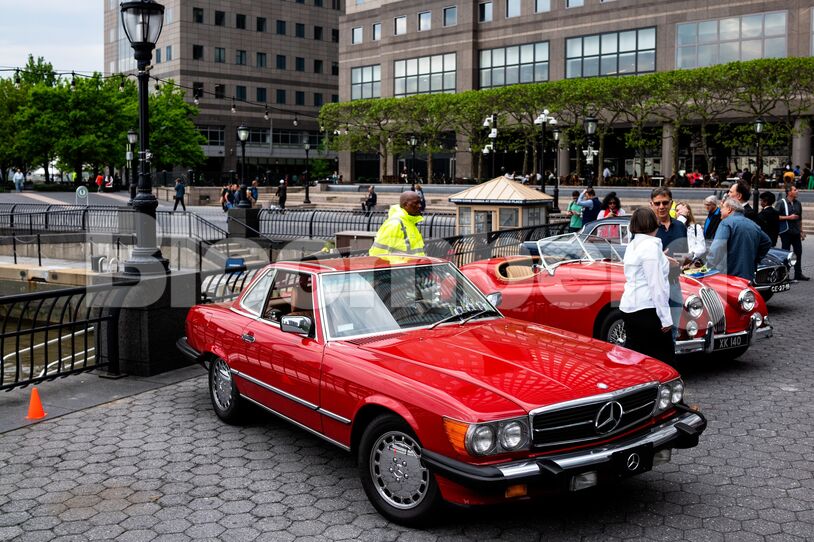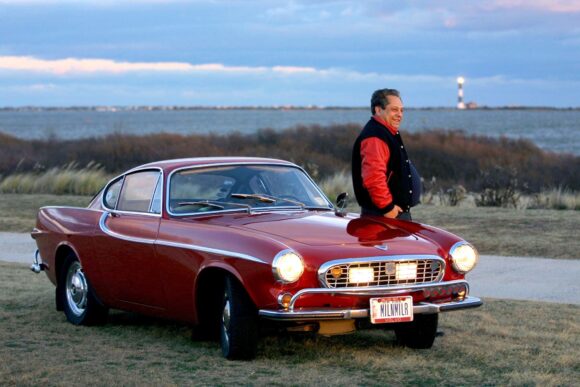On Jan. 5, a 2005 Porsche Carrera GT with just 780 miles on its odometer sold on the online auction site Bring a Trailer for $1.9 million. The astounding sum set a world record for the sale of this kind of supercar at auction.
A second 2005 Porsche Carrera GT beat that record just two weeks later, when it sold on BAT for $2 million. That Carrera GT had logged just 250 miles.
It was the waifish odometer reading on the second car that helped it break the record, even though it came in a less desirable silver color.
“Oh yes, we see a meaningful increase in bidding and sale prices depending on mileage,” said Randy Nonnenberg, the co-founder of BAT, via email about the sale. “And online buyers care as much about mileage as any other buyers.”
Hagerty estimates that for vehicles so special that they’ve been collectible since their first drive—something like a 2005 Ford GT—examples with from 100 to 1,000 miles are worth 67% more on average than similar examples with more mileage. They’re worth a whopping 88% more if the dial reads below 100 miles. Even for vehicles that have slowly become collectable over time, such as the Cadillac CTS-V Wagon, ultralow mileage can mean a 60% value premium.
“Either way, a genuinely low odometer reading can translate to significant value,” says John Wiley, the senior automotive analyst at Hagerty, a car insurance and analytics company based in Traverse City, Mich.

Cars as Collectibles, Not Driveables
Traditionally, cars with low mileage attract people who wanted that particular model when it was new but couldn’t afford it at the time; when they finally can afford one, they are willing to pay a higher number to get one in mint condition, ready to show off. If you’re thinking of putting your car into a concours-style competition, you’ll be looking for very minimal logged mileage, Nonnenberg said. Perfect examples of the Mercedes-Benz 300SL Gullwing, Ferrari 250 GTO, and Aston Martin DB6 from years past and more recently, the McLaren P1, Jaguar XJ220, and Maserati MC12 all fall into this category: The lower the miles, the better.
This crew of investors and speculators usually has the deepest, biggest pockets. “Low mileage vintage vehicles with a long-standing owner or great documentation like mileage logs are very sought after and bring higher prices,” Nonnenberg said in an email.
If a particular car doesn’t come in a special color or trim that makes it stand out, a low number on the odometer will do the trick, adds Gord Duff, the global head of auctions at RM Sotheby’s: “I think everybody always wants to have the best example of that particular type of car.”
But then you can’t really use it. Ever.
“The people who buy the 200-mile car are going to treat it like a sculpture, with zero intention of actually driving it,” says Duff. “They may even be very cautious about driving it across the parking lot, because so much of the value is wrapped up in the mileage.”
So What’s “Low”?
There are different levels to what is considered “low” mileage. They depend on such things as how old a car is, how many were made, and whether it was made for the street or track. For a Porsche 959, 26,000 miles is extremely high mileage, since few were made, most were raced, and it’s a 35-year-old car. That amount would be average on a Porsche 991 Turbo S, which started unlimited production in 2011 and ended production just three years ago. For any supercar, especially a modern one like the Bugatti Chiron, 4,000 miles is outrageously high.
“It sometimes seems like 70% of all 2005-2006 Ford GTs out there have under 5,000 miles on them, even though they are nearing 20 years old,” Nonnenberg says.
European drivers in general seem less concerned about adding on the miles than are Americans or owners in the Middle East, where some wealthy people brag about owning cars they’ve never even started.
“In Europe, there are a lot more guys driving their cars and not trying to find the next-lowest-mileage [car],” says Duff. “Some of these supercars like the [Ferrari] F40 can have 60,000 or 75,000 kilometers on them.”
The less rare and specialized the vehicle, generally, the less low mileage will matter. Some of the newer ones such as the Mercedes SLs of the 1980s and Chevrolet Corvettes of the 1970s have become trendy regardless of mileage. They were produced by the tens of thousands so they are hardly rare—and they were never supremely expensive to begin with.
What If You Can’t Measure It?
Many older vehicles, from Ford Broncos and Chevrolet Camaros to BMW 2002s have five-digit odometers that regularly turn over to start anew, making it difficult to verify total miles.
“Odometers of the last 20 years don’t tend to break like the old rotating geared units used to, and cars in the USA built starting in 1981 have public records of many of their sales and service visits, so accuracy is easier to validate,” Nonnenberg said. With older cars, “we will often caveat descriptions with ‘miles shown’ if only documented by an old odometer and ‘TMU’ which stands for True Mileage Unknown if a car has been restored or had work done to the gauges.”
Any such car advertised as an ultralow mileage vehicle should be approached with a healthy dose of skepticism. In this instance, it is worth obtaining the title history of the vehicle from the Department of Motor Vehicles and noting the milage recorded over the years; that can help determine how many total miles the car has.
The Real Badge Of Honor: Surviving
The contrarian twist to it all is that ultrahigh mileage sometimes gets the most respect. Irv Gordon’s 3-million-mile P1800, currently owned by Volvo’s archives department, is the world’s most famous Volvo; one Porsche owner in Toronto is renowned in car circles for personally driving more than 1 million miles on his single-owner 1976 930 Turbo. Mercedes-Benz used to award grill badges to owners for every 100,000 kilometers they logged. Like original tool kits, luggage sets, and log books, a period-correct detail such as one of these original badges would always be listed as an extra on the car, adding to its allure and potential price.
It often comes down to what is unusual and unexpected for a given car, Nonnenberg said, whether it’s a Mini Cooper S that had 55,000 miles but was parked in a garage for 40 years, or a modern BMW M3 with just 4,700 miles on it. Both recently sold for premiums significantly higher than similar cars.
“Unusual mileage generates demand for any era vehicle,” he said. “Interesting stories add value across any year.”
About the photo: Former schoolteacher Irv Gordon stands next to his 1966 Volvo P1800 in this undated photo. Gordon gained fame in the car world for driving the car more than 3 million miles. Photographer: Getty Images/Getty Images
Was this article valuable?
Here are more articles you may enjoy.


 Cyber Breach Affected 750,000 Canadian Investors, Regulator Says
Cyber Breach Affected 750,000 Canadian Investors, Regulator Says  Palantir Poaching Suit Called ‘Scare’ Tactic by Ex-Employees
Palantir Poaching Suit Called ‘Scare’ Tactic by Ex-Employees  Singer’s Elliott Sued by PE Firm in Escalating Fight Over Money
Singer’s Elliott Sued by PE Firm in Escalating Fight Over Money  Munich Re: Insured Losses From Wildfires, Storms and Floods Hit Record High
Munich Re: Insured Losses From Wildfires, Storms and Floods Hit Record High 